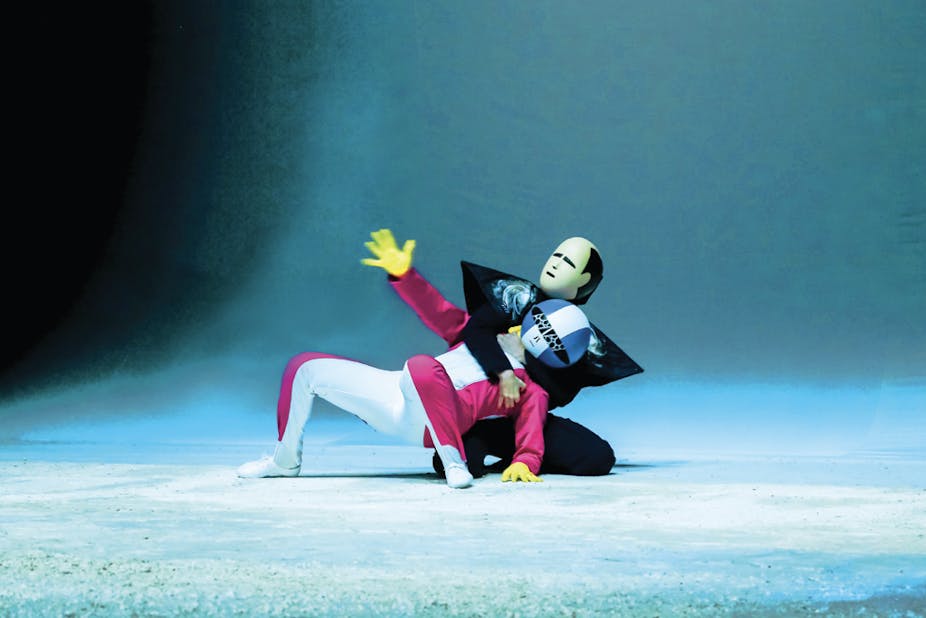The audience is given few clues before entering the world of Marzo, a dance work currently playing at this year’s Melbourne Festival. We know nothing about the time, the place, or the characters. The stage is minimal; the audience begins by looking into a stark white crater. This sparse setting belies the fantastical sparks of conflict and desire to come.
Marzo: war and love
Marzo (March in Italian) is traditionally the time of returning to war in Europe after the long winter. But March is also the beginning of spring, a time of renewal and new love. That paradoxical collision of love and war that connects the six characters in this arresting drama.
The piece begins with a warrior returning to the battlefield, his heavily stylised movement coupled with simple Japanese poetry spoken on top of the bass-heavy score. Two other manga-styled characters – a dancer and a champion – emerge and an epic love/ war triangle emerges, in an often brilliantly synaesthetic play of light, sound and choreography.
Perhaps the most unique aspect of this production is the place of the weirdly colossal beings emerging as forces at central points of the performance. The audience is not sure what to make of the characters at first – and their movement is sometimes comedic. They exist as turbulent forces pushing the characters towards both hate and love.
Often they are perfectly placed to focus the audience’s attention on the relationship between microbial transformations of energy and the energy of human emotion. Their buzzing movement is indeed reminiscent of the behaviour of atoms seen under a microscope.
Audience members may be reminded of Italo Calvino’s 1976 book of short stories Cosmicomics, in which he imagines the micro-worlds possible in the transformation of matter. Just as the cellular structures in Calvino’s micro-worlds feel and communicate tensions and desires, so the manga-like characters of Marzo relate their microscopic energies to the extremes of human emotion and attraction.
Dewey Dell’s latest offering
Marzo is produced by Dewey Dell, the production company formed in 2007 by Teodora, Demetrio, Agata Castellucci and Eugenio Resta, after the trio had completed studies at Stoa, an Italian school for rhythmic movement.
Melbourne audiences first experienced their work in 2012 in Cinquanta Urlanti, Quaranta Ruggenti, Sessanta Stridenti and Grave. The company has quickly established a reputation for eccentric productions that experiment with movement and sound. Marzo is their first production to experiment with spoken word and costume.
For this show, the company collaborated with two Japanese artists: the costumes were created by Yuichi Yokoyama, an iconic Japanese comic artist known for his manga creations; Kuro Tanino, the theatre director of the Japanese company Niwagekidan Penino, worked with the company to create the Japanese spoken word pieces scattered throughout the performance.
While the company was clearly looking for new ways to “speak” to its audience, it was actually the variety of movement in the dance, coupled with the glitchy atmospheric soundtrack, that worked best. At times there were probably too many elements – the mix of costume, spoken word, sound, light and movement sometimes seemed out of context or out of sync.
But the collaboration seemed at its best in the costumes of the colossus characters, which both restricted the dancers’ movements, but also added a sense of weightlessness and illusory force that added to our understanding of the forces that drove the dramatic consequences in the piece.
Marzo is playing at the Melbourne Festival until October 14. Details here.

